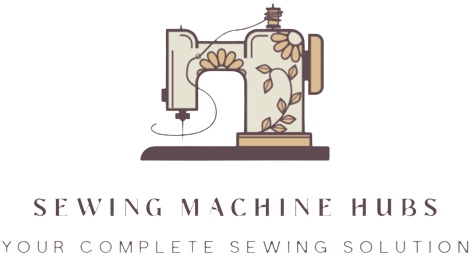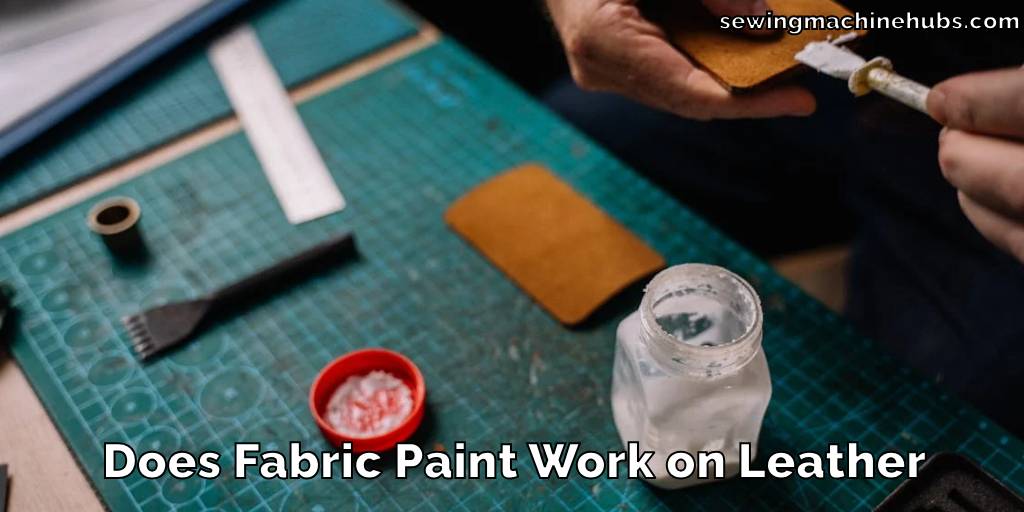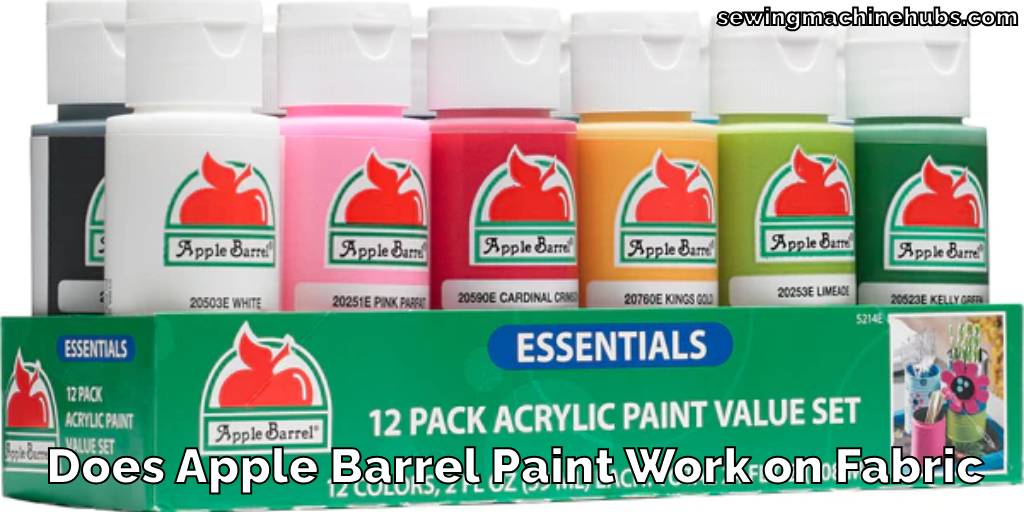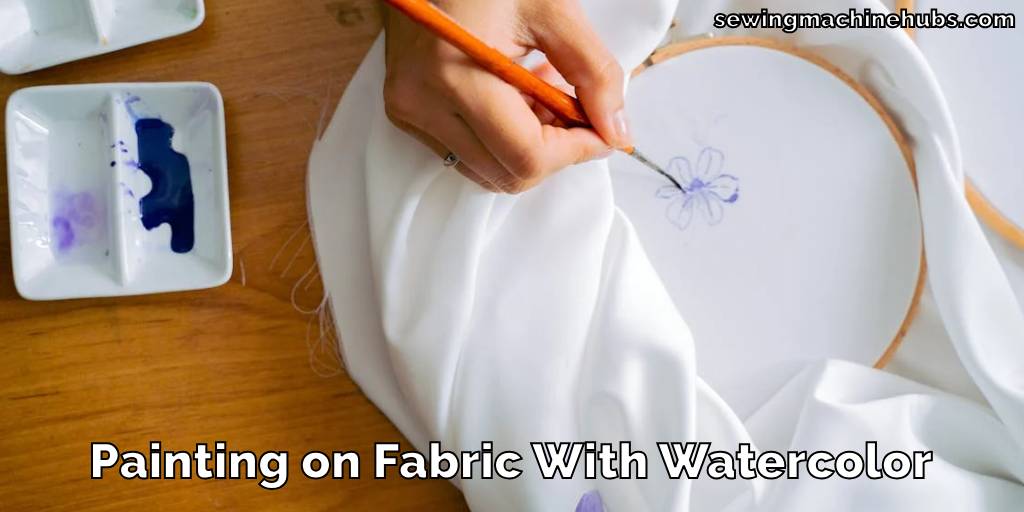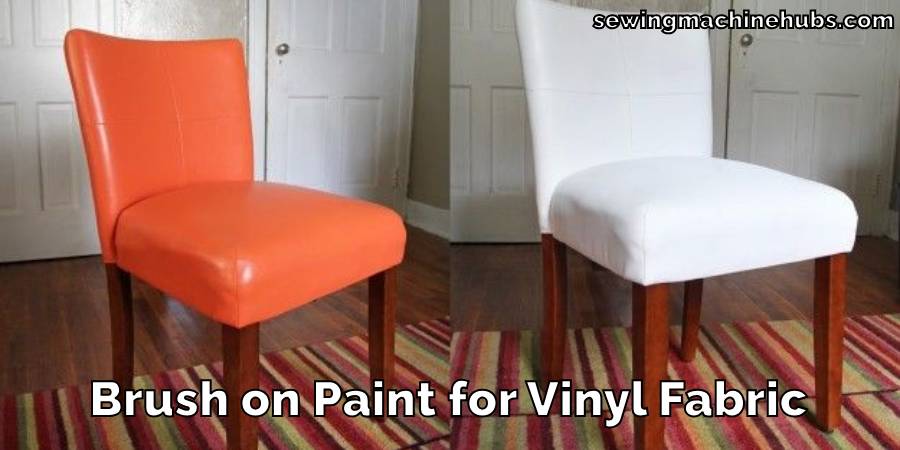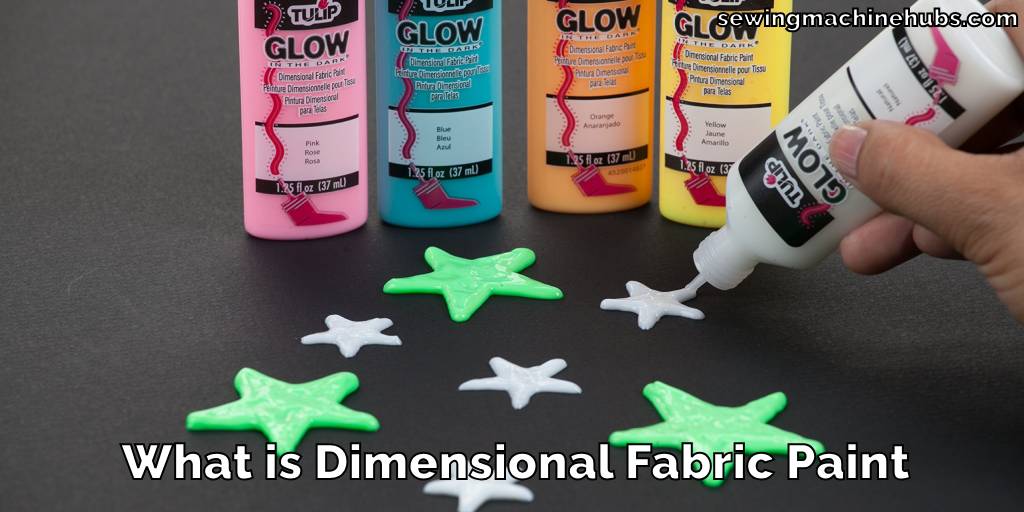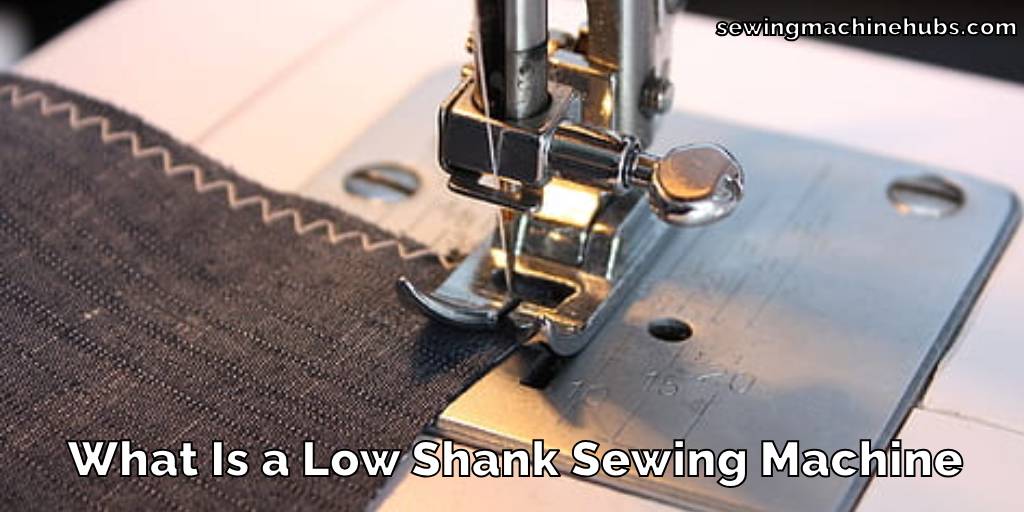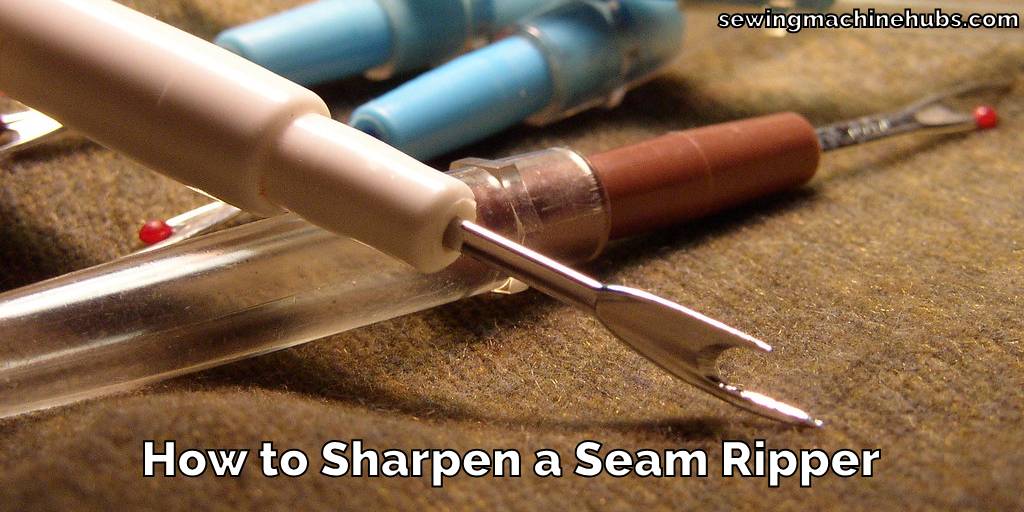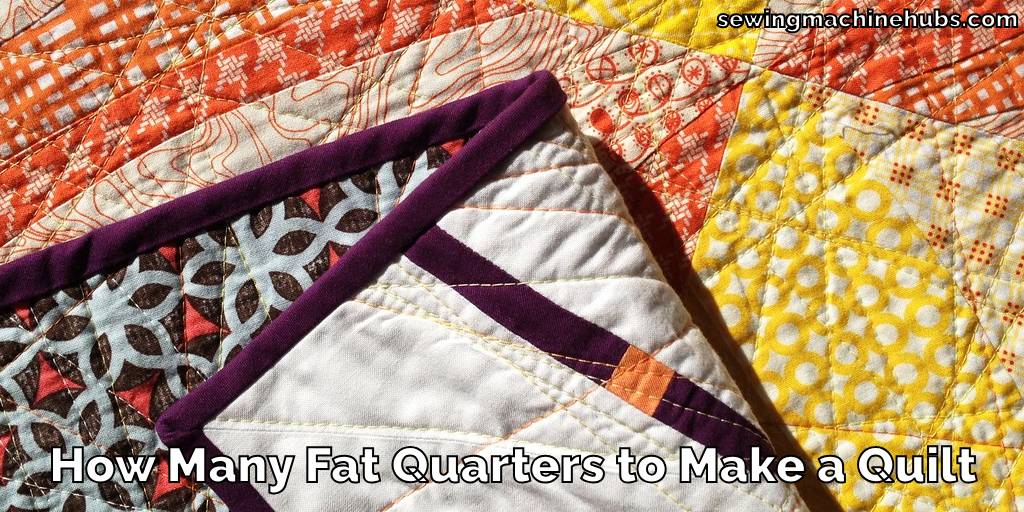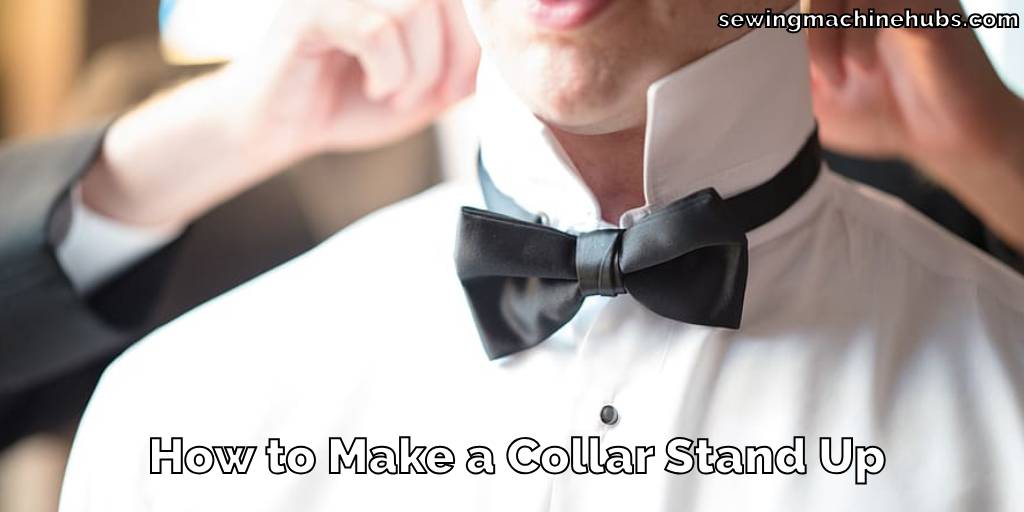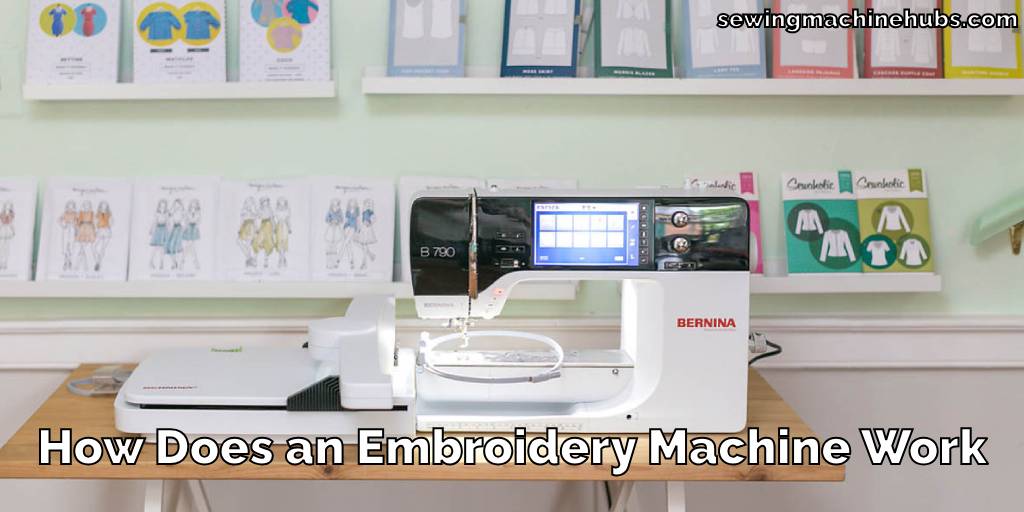Understanding the difference between a serger and a sewing machine is key for anyone who sews, whether you’re just starting out or you’ve been at it for years. It’s important to know which tool is best for your project.
A serger, or overlock machine, is great for finishing edges. It cuts the fabric and wraps the edge in thread all at once. This helps stop the fabric from fraying and makes your seams look neat and professional.
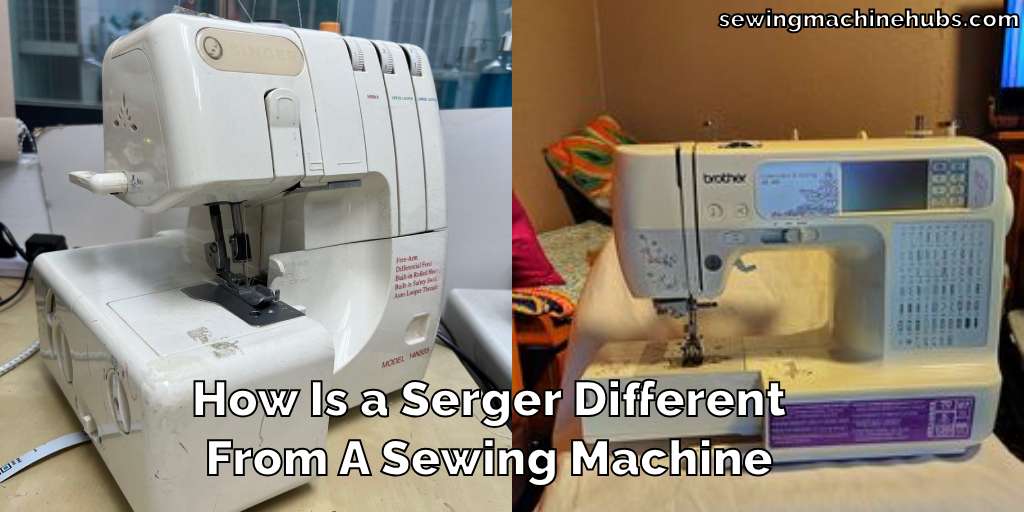
On the other hand, a sewing machine is more versatile. It’s used for joining pieces of fabric together, making buttonholes, and adding decorative stitches. knowing how is a serger different from a sewing machine can make a big difference in how your project turns out.
This info is not just for making simple things but also for more complicated sewing projects. It’s helpful for beginners learning the basics and for experienced sewers looking to get better at their craft.
Why a Serger is Different from a Sewing Machine
A serger and a sewing machine are both valuable tools in the world of sewing, but they serve different purposes due to their unique capabilities. The primary difference lies in their functionality and the kind of stitching they provide.
A serger, also known as an overlock machine, is specifically designed for edging, hemming, and seaming fabrics. What makes a serger stand out is its ability to cut the fabric edge and encase it in a thread casing simultaneously.
This process creates a clean, professional finish, especially useful for fabrics that fray easily. Sergers often use multiple threads (usually three or four) at once, which contributes to the durability and elasticity of the stitch. This feature makes them ideal for constructing garments, as the seams can stretch without breaking.
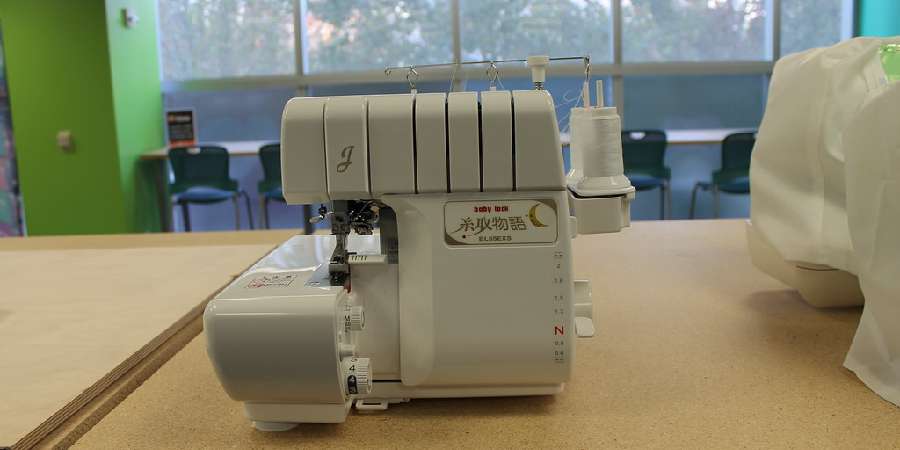
On the other hand, a conventional sewing machine is more versatile for general sewing tasks. It is used for joining pieces of fabric, adding zippers, creating buttonholes, and making decorative stitches. While it doesn’t trim the fabric like a serger, it offers a variety of stitches, such as straight or zigzag, which are essential for different sewing projects.
The choice between a serger and a sewing machine depends on the project at hand. For making clothes, especially with stretchy fabrics, a serger is the better choice for its strong, stretchable seams and clean edges. For more detailed work like quilting, crafting, or adding intricate designs to fabric, a regular sewing machine is more suitable.
Understanding these differences ensures that the right machine is used for the right project, leading to better results and more efficient sewing.
How is a Serger Different from a Sewing Machine
To really get the hang of what sets a serger apart from a sewing machine, it helps to dive into the specifics like the stitches they make, how you thread them, their speed, and what kinds of fabric they’re best for. Let’s break it down in simple terms:
Stitch Types
- Serger: A serger is all about the overlock stitch. This stitch wraps the fabric edge in thread, making seams strong and stretchy. Sergers use several threads at once (usually three or four) to do this, which is great for stopping fabric from fraying and for getting that clean, professional edge.
- Sewing Machine: Sewing machines give you a lot more stitch options, like straight, zigzag, and fancy stitches. They’re the go-to for a variety of sewing jobs, whether you’re putting on buttons, making buttonholes, or adding decorative touches.
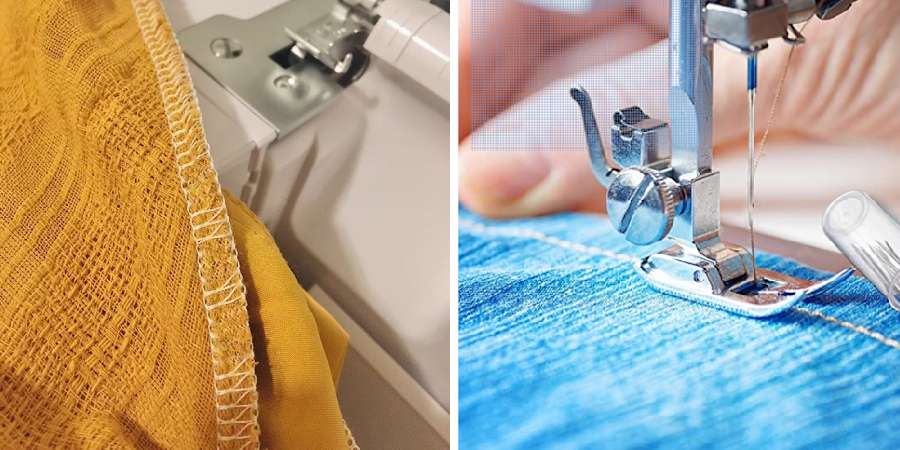
Threading Mechanisms
- Serger: Threading a serger can be a bit tricky because it uses several threads and has loopers instead of bobbins. It might take some practice, especially if you’re new to sewing.
- Sewing Machine: Sewing machines are simpler to thread, with just one top thread and one bobbin thread. This makes them more beginner-friendly.
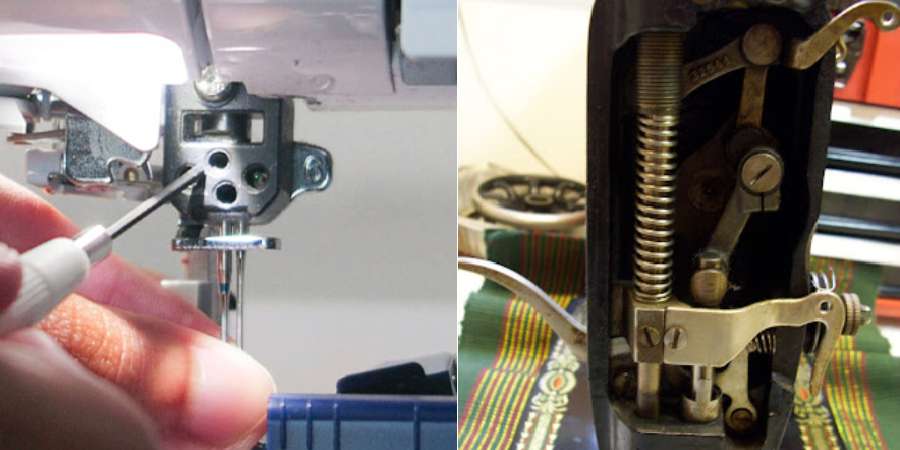
Speed
- Serger: Sergers are usually faster than sewing machines. This speed can be a big plus for projects that have a lot of seams or need edges finished quickly.
- Sewing Machine: Sewing machines might not be as fast, but they give you more control for detailed work, which is key for precise jobs like quilting or detailed designs.
Materials and Fabric Types
- Serger: Sergers are top-notch for stretchy and lightweight fabrics. The overlock stitch lets the fabric stretch without breaking the seam, perfect for sewing things like knitwear and jerseys.
- Sewing Machine: Sewing machines can handle a wider variety of fabrics, from thick to thin. They’re good for projects where an overlock stitch isn’t needed.
Examples of Projects
Use a Serger For
- Clothing Construction: Especially with stretchy materials like knits.
- Finishing Edges: To get that clean, professional edge, especially on fraying fabrics.
- Quick Seam Work: Like when you’re making curtains or tablecloths and have lots of seams to do fast.
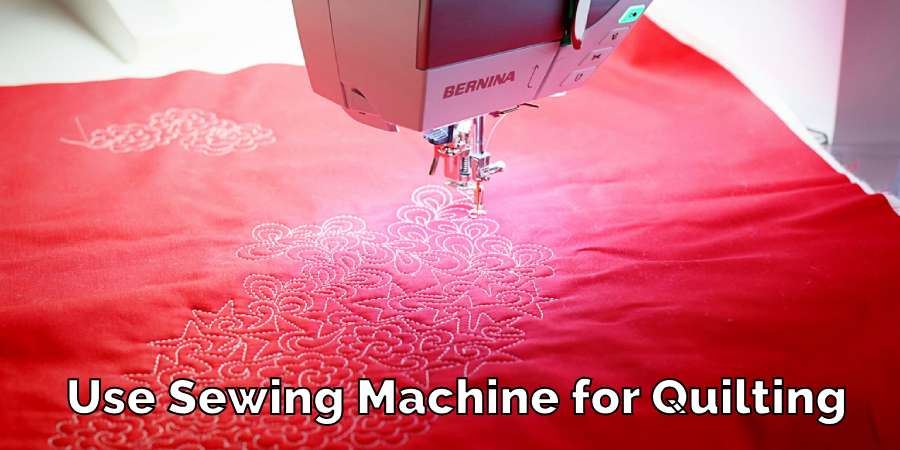
Use a Sewing Machine For
- Detailed Projects: Like quilting, where you need precise stitches and a variety of stitch types.
- Adding Decorations: For projects that need decorative stitches.
- General Repairs and Alterations: For everyday sewing tasks like fixing tears or adjusting hems.
Sergers and sewing machines each have their own strengths. Sergers are great for quick, stretchy seams and finishing edges, while sewing machines offer more stitch variety and precision for detailed work on a wide range of fabrics. Knowing these differences helps you pick the right tool for your project, leading to better results and more efficient sewing.
Precautions While Using a Serger
When using a serger, it’s important to follow specific safety measures to prevent accidents and ensure smooth operation. Sergers are fast and efficient but can be hazardous if not used properly. Here are some key precautions:
- Keep Fingers Away from the Blade: Sergers have a sharp blade that trims the fabric as you sew. It’s crucial to keep your fingers away from this area to prevent cuts.
- Use the Correct Needles: Always use needles that are specifically designed for sergers. Using the wrong needles can damage the machine and lead to poor stitch quality.
- Thread Properly: Incorrect threading can cause the serger to malfunction. Make sure to follow the threading guide carefully. Misthreading not only leads to poor stitch quality but can also strain the machine.
- Don’t Force Fabric: Allow the serger to feed the fabric naturally. Forcing or pulling the fabric can bend needles and damage the machine.
- Regular Maintenance: Keep your serger clean and oiled. Lint and debris can accumulate quickly due to the cutting mechanism. Regular maintenance helps prevent mechanical issues.
- Unplug When Not in Use: To avoid accidental starts or injuries, unplug the serger when it’s not in use, especially during cleaning or threading.
- Use a Scrap Fabric First: Before working on your project, test your settings on a scrap piece of similar fabric. This helps avoid errors on your actual project.
- Be Aware of Speed: Sergers work faster than sewing machines. Beginners should start at a slower speed to maintain control until they get used to the machine’s pace.
By following these precautions, you can safely and effectively use a serger. Remember, a serger is different from a sewing machine, not just in function but also in the way it should be handled. Awareness and careful handling are key to preventing common mistakes and ensuring a safe sewing experience.
FAQs
Can You Use a Serger as a Regular Sewing Machine?
A serger cannot fully replace a regular sewing machine due to its specific functions. While a serger is excellent for overlocking, which involves trimming and finishing the edges of the fabric, it lacks the versatility of a sewing machine.
Sergers primarily create overlock stitches, great for seams in stretchy fabrics and edging, but they can’t perform a wide range of stitches like straight or zigzag, which is essential for many sewing projects.
Additionally, tasks like buttonhole making, attaching zippers, or detailed decorative stitching, which are easily done on a sewing machine, are not possible on a serger. So, while a serger is a valuable addition to a sewing setup, it doesn’t serve as a complete substitute for a regular sewing machine.
Which is Better a Sewing Machine or a Serger?
The choice between a sewing machine and a serger depends on the specific needs of your project. A sewing machine is more versatile and suitable for a variety of stitches and tasks like attaching buttons, creating buttonholes, and adding decorative details. It’s ideal for projects that require precision and a range of stitching techniques.
On the other hand, a serger is better for projects that need durable, stretchable seams and professional-looking edges, like in garment construction. It’s also faster, making it suitable for projects with a lot of seam work. Ultimately, the “better” option depends on what you need to achieve with your sewing project.
For What Reason Would You Use a Serger Machine?
A serger machine is used primarily for its strength in seam finishing and working with stretchy fabrics. In garment construction, a serger provides strong, stretchable seams that are essential for clothing, especially those made from knit fabrics.
The overlock stitch that a serger creates encases the fabric edge, making it ideal for preventing fraying and achieving a professional finish on the insides of garments. This is particularly important for items that will be washed and worn frequently.
Additionally, sergers can handle fabric edges quickly and cleanly, making them great for projects that need a lot of seam work, like curtains or tablecloths. The speed and efficiency of a serger, combined with its ability to create durable, stretch-friendly seams, make it a valuable tool in garment construction and finishing.
What is So Great About a Serger?
A serger stands out for its speed and ability to give a clean, professional finish to fabric edges. This machine is a game-changer for those working with stretchy fabrics, as it can create strong, stretchable seams that are essential for garments. Its overlock stitch not only prevents fraying but also ensures the seam is neat and durable.
Sergers are faster than traditional sewing machines, making them ideal for large projects or those that require a lot of seam work. They simultaneously trim and encase the edge of the fabric in thread, which saves time and elevates the quality of the finished product.
For anyone looking to produce clothing or items with a high-quality finish quickly, a serger is an invaluable tool.
Why Are Sergers So Expensive?
Sergers are generally more expensive than regular sewing machines due to their technological complexity and specialized functions. They are equipped with multiple thread spools and often have an integrated cutting blade, which adds to their cost.
The construction and design of a serger require precise engineering to ensure that it can simultaneously trim fabric and neatly stitch it, which involves complex mechanisms. Additionally, the durability and high-speed capabilities of sergers make them more sophisticated, contributing to the higher price.
While their cost is higher, the efficiency and professional results they offer, especially in garment construction and finishing, make them a worthwhile investment for those serious about sewing.
Conclusion
Understanding the critical differences between a serger and a sewing machine is essential for anyone involved in sewing. A serger is specialized for edging, hemming, and creating durable, stretchable seams with its overlock stitch, making it ideal for garment construction and working with stretchy fabrics.
Its ability to trim and finish fabric edges simultaneously offers speed and a professional look. On the other hand, a sewing machine provides a broader range of stitches and is suited for a variety of tasks including detailed work, adding decorative stitches, and creating buttonholes.
Recognizing these differences is key to selecting the right tool for your specific sewing projects. Rather than viewing a serger and a sewing machine as mutually exclusive, consider them as complementary tools in your sewing arsenal. Each has unique strengths that, when combined, can significantly enhance the quality and efficiency of your sewing projects.
Whether you’re a beginner or an experienced sewer, having both machines at your disposal opens up a wider range of creative possibilities and allows for greater flexibility in your sewing endeavors. This article has explored how is a serger different from a sewing machine.
You may read also – How to Make Permanent Sewing Patterns
Does Fabric Paint Work on Leather
Got a burning question on your mind? Here it is: Does Fabric Paint Work on…
Does Apple Barrel Paint Work on Fabric
You may have wondered “Does Apple Barrel Paint Work on Fabric”? The answer is Yes,…
Painting on Fabric With Watercolor
Picking up watercolors and painting on fabric is like opening a door to a whole…
Paint Fabric Headboard
Revitalizing your bedroom’s aura doesn’t always call for a grand makeover. Sometimes, a simple yet…
Brush on Paint for Vinyl Fabric
Starting our journey in painting vinyl fabric offers us a chance to change common items…
What is Dimensional Fabric Paint
Picture a place where fabric isn’t just fabric anymore; it turns into a playground for…
